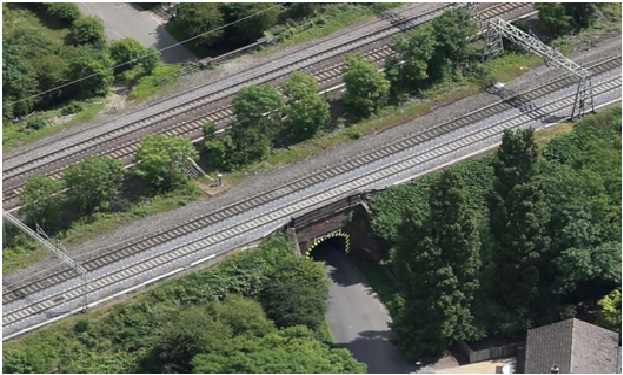AI Holds the Key to Improve Biodiversity in Railway Tracks
Trials using artificial intelligence (AI) to identify species of trees and other plants from photographs taken by on-board cameras have proven that lineside vegetation can be safely monitored. safely, cheaply, quickly and on a large scale.

Figure 1: AI uses to identify species of tree and other plants.
Figure 1 shows that the UK Center for Ecology & Hydrology (UKCEH) and tech company Keen AI have worked with Network Rail to develop innovative solutions to remotely monitor biodiversity. They demonstrated that AI can identify invasive species near the runway as well as native trees potentially at risk due to diseases such as ash dieback.
This information would then enable railway workers to take appropriate action to better manage wayside vegetation, as part of Network Rail’s commitment to achieve a net gain in biodiversity on its land by 2035.
UKCEH and Keen AI have created AI software that can identify ash trees as well as Japanese knotweed (a source of complaints to Network Rail from neighbors every year), Himalayan balsam and the poisonous plant the ragwort.
Dr Tom August, Computational Ecologist at the UKCEH, explains that “trials have demonstrated that we will be able to monitor line edge vegetation safely, cheaply, quickly and at scale.”
“Our equipment was able to take thousands of clear images of a running gear at up to 80 mph, and our AI software can identify ash and other species with a high level of accuracy.” [1]
Amjad Karim says that “Network Rail spends £200 million every year on vegetation administration; with the intention to hold the community operational. The goal of our work is to provide employees at Network Rail the instruments they should safely and precisely determine the place motion could also be required.”
“We’ve been pushing the boundaries of what’s potential in terms of the pace of the digicam, high quality of pictures and measurement of the system, all whereas protecting it versatile and low-cost.” [2]
Community Rail says IA’s work will help its sustainability technique which outlines important modifications to the best way it manages its land, to strike a greater stability between working a protected and dependable railway and prosperity of nature.
Dr Neil Robust, Director of Biodiversity Technique for Community Rail, says that “with 52,000 hectares of land to handle and 7 million folks residing close to our railway line, successfully monitoring, sustaining and enhancing the biodiversity of our land is a monumental and very important activity that requires cutting-edge options.” [3]
References:
- https://eumail24.com/trials-show-that-ai-holds-the-key-to-improving-biodiversity-next-to-railway-tracks/
- https://daystech.org/trials-show-ai-holds-the-key-to-improving-biodiversity-next-to-railway-tracks/
- https://ebuties.com/trials-show-ai-holds-the-key-to-improving-biodiversity-next-to-railway-tracks/
Cite this article:
Sri Vasagi K (2022), AI Holds the Key to Improve Biodiversity in Railway Tracks, Anatechmaz, pp. 352

